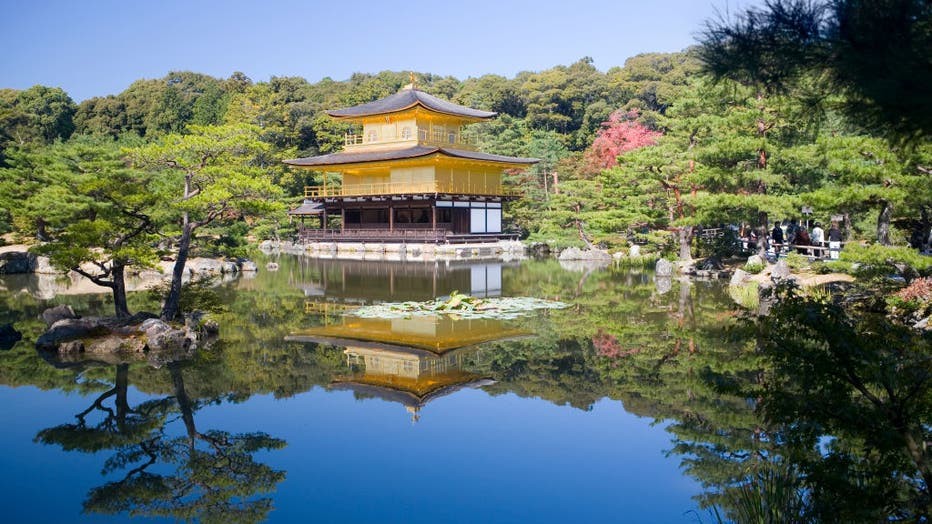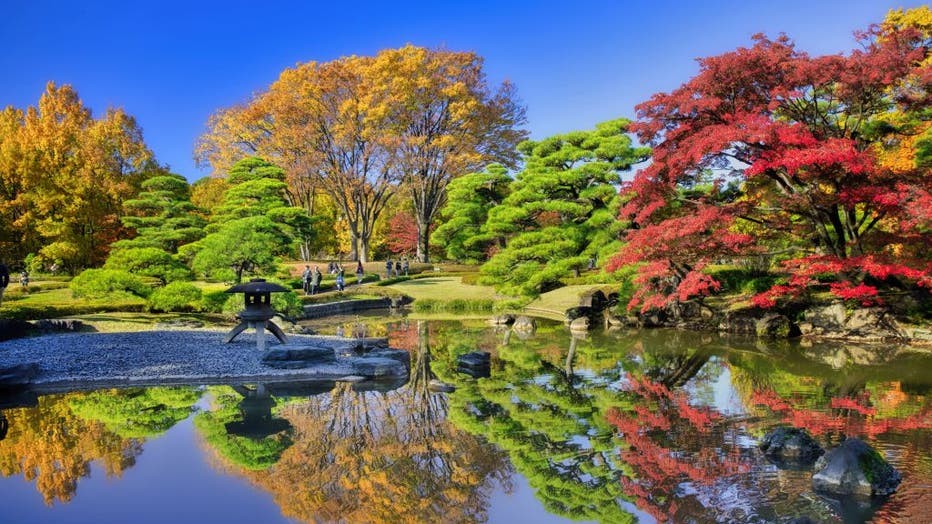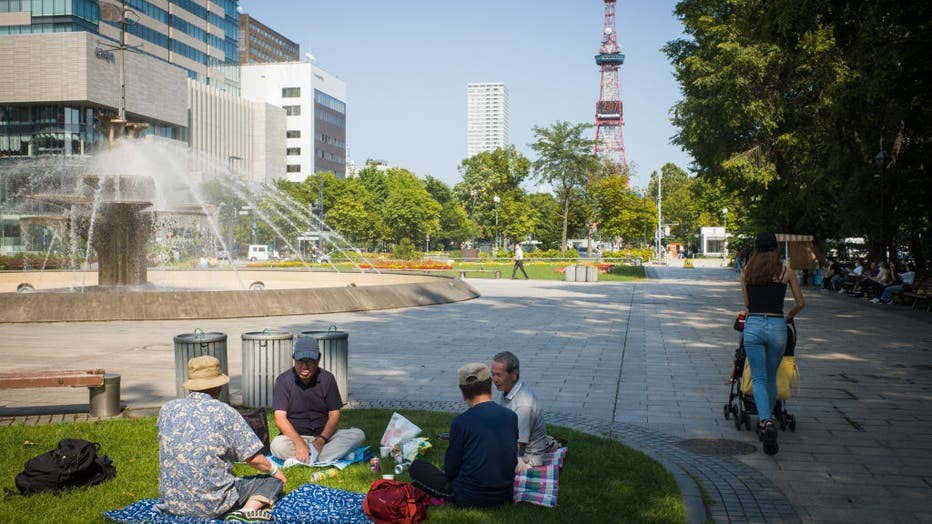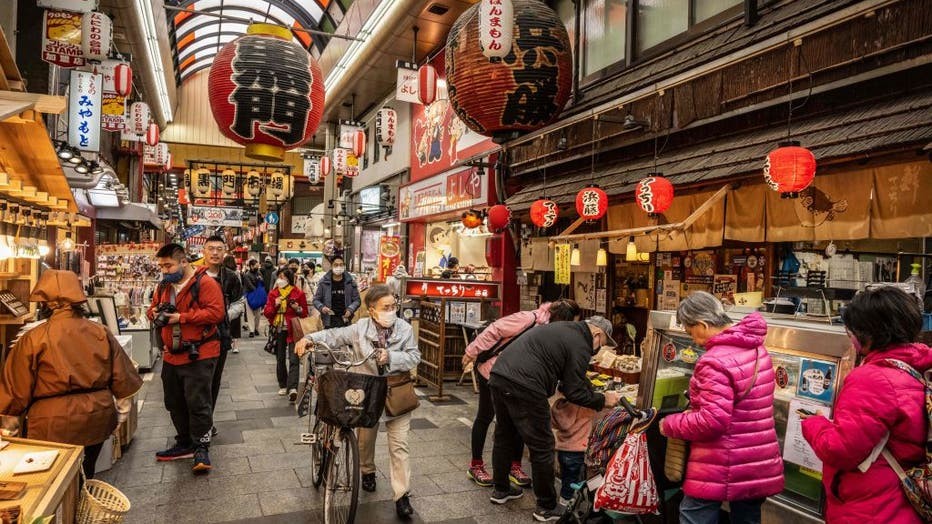Are you wondering, “Is It A Good Time To Travel To Japan?” With the yen’s recent fluctuations and a wealth of cultural and natural attractions, Japan is an increasingly attractive destination for travelers. SIXT.VN offers services that can make your trip seamless, from airport transfers to hotel bookings. Discover the best time to visit Japan and how SIXT.VN can help you plan an unforgettable journey.
1. Why Now Is a Great Time to Visit Japan
Is it a good time to travel to Japan right now? Yes, now is an excellent time to explore Japan due to favorable exchange rates and diverse attractions. The recent fluctuations in the Japanese yen have made it more affordable for international travelers, especially those from the U.S., Europe, and Australia. This, combined with Japan’s rich culture, stunning landscapes, and modern amenities, makes it an ideal destination. According to research from the Japan National Tourism Organization (JNTO) in 2023, Japan saw a significant increase in international visitors due to the weakened yen, enhancing its appeal as a budget-friendly travel destination.
1.1 The Yen’s Impact on Travel Costs
The depreciation of the yen significantly reduces the cost of travel in Japan. Every dollar, euro, or Australian dollar stretches further, allowing tourists to enjoy more experiences without exceeding their budget. This means that everything from accommodation to dining and shopping becomes more affordable. A report by the Bank of Japan in 2024 indicated that the weaker yen has boosted tourism revenue by making Japan a more competitive destination compared to other developed countries.
1.2 Affordability Across Key Destinations
Major cities and regions like Kyoto, Tokyo, Osaka, and Hokkaido offer unique and affordable experiences. For instance, Kyoto’s historical sites, Tokyo’s vibrant streets, Osaka’s culinary scene, and Hokkaido’s natural beauty can all be explored without breaking the bank. The Japan Tourism Agency reported in 2023 that tourists are spending less on average per day, thanks to the favorable exchange rate, allowing them to extend their stays and see more of the country.
2. Exploring Japan’s Top Destinations on a Budget
What are the top destinations in Japan that won’t break the bank? Kyoto, Tokyo, Hokkaido, and Osaka provide diverse and budget-friendly experiences. Each of these cities offers unique attractions and activities that cater to a wide range of interests, all while remaining affordable due to the current exchange rates.
2.1 Kyoto: History and Affordability
Kyoto is renowned for its ancient temples, traditional gardens, and geisha districts. Visitors can explore iconic sites like the Golden Pavilion (Kinkaku-ji) and Fushimi Inari Shrine, both offering free or low-cost entry. Sampling street food at Nishiki Market is an affordable way to experience local cuisine.
 Kinkaku-ji Temple in Kyoto
Kinkaku-ji Temple in Kyoto
Economical dining options include sampling street food at Nishiki Market, where specialties like tako tamago (candied octopus with a quail egg) are must-tries.
2.2 Tokyo: Diverse Experiences on a Dime
Tokyo offers a mix of traditional and modern attractions. You can visit the Imperial Palace Gardens for a serene escape or dive into the energy of Shibuya and Harajuku, all without spending much. Affordable dining options include Ramen Street in Tokyo Station and Tonkatsu Maisen Aoyama Honten for some of the best breaded pork cutlet. According to a 2024 survey by the Tokyo Metropolitan Government, many attractions in Tokyo are free or offer discounts for tourists, making it a budget-friendly city to explore.
 Imperial Palace Gardens in Tokyo
Imperial Palace Gardens in Tokyo
For affordable dining, check out Ramen Street in Tokyo Station where eight renowned ramen shops serve up bowls perfect for a budget. Don’t miss Tonkatsu Maisen Aoyama Honten in Omotesando for some of the best breaded pork cutlet in Tokyo.
2.3 Hokkaido: Nature and Gourmet Delights
Hokkaido offers breathtaking natural beauty alongside unique culinary experiences. Budget travelers can enjoy both at places like Otaru, where canal-side cafes offer views and treats. Don’t miss the region’s famous seafood, particularly at kaitenzushi (conveyor belt sushi) restaurants like Toriton Kaitenzushi in Sapporo, where high-quality sushi is surprisingly affordable.
 Sapporo Odori Park in Hokkaido
Sapporo Odori Park in Hokkaido
For a memorable visit, don’t miss Odori Park in Sapporo, the most visited tourist attraction in Hokkaido. This expansive park is the heart of the city and offers a peaceful escape with its beautiful fountains and seasonal flowers.
2.4 Osaka: The Kitchen of Japan
Osaka is famed for its street food like takoyaki and okonomiyaki in Dotonbori. Visit Matsusakagyu Yakiniku M for budget-friendly, top-rated dining where you grill your own wagyu beef. Beyond cuisine, Osaka’s Kojima area, known as the Denim District, is a treasure trove for high-quality, artisanal denim.
 Kuromon Market in Osaka
Kuromon Market in Osaka
Beyond cuisine, Osaka’s Kojima area, known as the Denim District, is a treasure trove for high-quality, artisanal denim. Despite typically high prices, the favorable exchange rate now makes these luxury garments more accessible to American visitors.
3. Must-Do Activities and Attractions in Japan
What are the must-do activities and attractions in Japan? Japan offers a vast array of activities and attractions catering to diverse interests, including cherry blossoms, iconic castles, cultural hotspots, relaxing hot springs, spiritual sites, culinary adventures, scenic rides, and historical walks. These experiences provide a comprehensive look into Japan’s rich cultural heritage and natural beauty.
3.1 Cherry Blossoms and Urban Wildlife
Experience the serene beauty of cherry blossoms at Ueno Park in Tokyo or watch the deer roam freely at Nara Park. These natural attractions offer peaceful and picturesque experiences, especially during the spring season. A study by the Japan Meteorological Agency in 2024 highlighted that cherry blossom season attracts millions of tourists each year, boosting local economies and promoting cultural appreciation.
3.2 Iconic Castles
Visit majestic sites like Himeji Castle, known for its striking white architecture and expansive grounds. Himeji Castle, a UNESCO World Heritage site, provides a glimpse into Japan’s feudal past and architectural prowess. According to UNESCO, Himeji Castle is one of the finest surviving examples of Japanese castle architecture.
3.3 Cultural Hotspots
Dive into the vibrant and quirky atmosphere of Akihabara in Tokyo, a paradise for tech enthusiasts and anime fans. Akihabara is a hub for electronics, manga, and anime merchandise, offering a unique and immersive cultural experience. A report by the Akihabara Tourism Association in 2023 indicated that Akihabara attracts a significant number of international visitors, drawn by its unique subculture.
3.4 Relaxing Hot Springs
Unwind in the famous onsens of Hakone or Beppu, where natural hot springs offer a soothing escape. Onsens are an integral part of Japanese culture, offering relaxation and therapeutic benefits. The Ministry of the Environment of Japan promotes onsen tourism as a way to experience the country’s natural beauty and cultural traditions.
3.5 Spiritual Sites
Reflect at the peaceful Zen temples of Kyoto, such as Ryoan-ji, famous for its rock garden. These temples offer a serene environment for meditation and contemplation, reflecting Japan’s spiritual heritage. According to the Kyoto Prefectural Government, these temples are essential for understanding Japanese culture and history.
3.6 Culinary Adventures
Sample the fresh sushi at Tsukiji Fish Market in Tokyo or indulge in Sapporo’s famous miso ramen. Japanese cuisine is renowned worldwide for its flavors and presentation, offering a culinary adventure for every palate. A survey by the Japan External Trade Organization (JETRO) in 2024 highlighted that Japanese food is a major draw for international tourists.
3.7 Scenic Rides
Take a scenic ride on the Shinkansen (bullet train) and witness the changing landscapes from city skylines to rural vistas. The Shinkansen is not only a mode of transport but also an experience, showcasing Japan’s technological advancements and scenic beauty. According to Japan Railways Group, the Shinkansen is one of the most efficient and reliable high-speed rail systems in the world.
3.8 Historical Walks
Stroll through the preserved samurai district in Kanazawa, offering a glimpse into Japan’s feudal past. These historical walks provide a tangible connection to Japan’s samurai heritage and architectural preservation. The Kanazawa City Tourism Association promotes these walks as a key attraction for visitors interested in history and culture.
4. Essential Travel Tips for Tourists in Japan
What are the essential travel tips for tourists in Japan? Key travel tips include staying connected with travel eSIM cards, understanding Japanese power outlets, and handling cash effectively. These practical considerations will ensure a smooth and enjoyable journey.
4.1 Staying Connected: Travel eSIM Cards
Before your trip to Japan, it’s a good idea to get a travel eSIM card like Ubigi. An eSIM is a digital version of a SIM card that lets you access cellular data without needing a physical card. Ubigi provides flexible, affordable data plans that you can manage directly from your device, making it easy to stay connected for navigation and internet access without the hassle of local SIM cards.
4.2 Power and Charging: Japanese Power Outlets
Japan uses Type A and Type B outlets, similar to the US, but the voltage is 100 volts. Check if your devices need a voltage converter to prevent damage.
4.3 Handling Cash: Exchanging Money
Many smaller venues outside major cities still only accept cash. For the best exchange rates, swap dollars for yen at foreign exchange banks or post offices in Japan, rather than at airports.
5. Understanding the Best Time to Visit Japan
When is the best time to visit Japan? The best time to visit Japan depends on your interests, with spring and autumn offering pleasant weather and iconic scenery. Spring (March to May) is famous for cherry blossoms, while autumn (September to November) boasts vibrant foliage. Summer (June to August) offers festivals and outdoor activities, and winter (December to February) is ideal for skiing and snow festivals.
5.1 Spring (March to May): Cherry Blossom Season
Spring is arguably the most popular time to visit Japan, thanks to the blooming cherry blossoms (sakura). Cities like Tokyo, Kyoto, and Osaka are adorned with these delicate pink flowers, creating a picturesque landscape. The Japan Meteorological Agency provides detailed forecasts of the cherry blossom season, allowing travelers to plan their trips accordingly.
Advantages of Visiting in Spring:
- Cherry Blossoms: Experience the iconic sakura season.
- Pleasant Weather: Enjoy mild temperatures and sunny days.
- Festivals: Participate in traditional spring festivals.
Disadvantages:
- Crowds: Expect higher tourist volumes and prices.
- Variable Weather: Occasional rain showers can occur.
5.2 Summer (June to August): Festivals and Outdoor Activities
Summer in Japan is characterized by warm weather, vibrant festivals (matsuri), and opportunities for outdoor activities like hiking and swimming. Regions like Hokkaido offer cooler temperatures and stunning natural landscapes.
Advantages of Visiting in Summer:
- Festivals: Experience traditional summer festivals with parades, food stalls, and fireworks.
- Outdoor Activities: Enjoy hiking, swimming, and other outdoor pursuits.
- Lush Scenery: Witness the vibrant greenery of the Japanese countryside.
Disadvantages:
- Humidity: Be prepared for high humidity and temperatures.
- Typhoon Season: Occasional typhoons can affect travel plans.
5.3 Autumn (September to November): Vibrant Foliage
Autumn is another excellent time to visit Japan, with its stunning autumn foliage (koyo). The changing leaves transform mountains and gardens into a tapestry of red, orange, and gold. Popular spots for viewing autumn leaves include Kyoto, Nikko, and the Japanese Alps.
Advantages of Visiting in Autumn:
- Autumn Foliage: Witness the breathtaking koyo season.
- Pleasant Weather: Enjoy cool and comfortable temperatures.
- Fewer Crowds: Experience fewer tourists compared to spring.
Disadvantages:
- Typhoon Season: Early autumn can still be affected by typhoons.
- Shorter Days: Daylight hours are shorter compared to summer.
5.4 Winter (December to February): Skiing and Snow Festivals
Winter in Japan offers unique experiences such as skiing, snowboarding, and snow festivals. Hokkaido and the Japanese Alps are popular destinations for winter sports enthusiasts. The Sapporo Snow Festival is a major attraction, featuring impressive ice sculptures and snow art.
Advantages of Visiting in Winter:
- Skiing and Snowboarding: Enjoy world-class winter sports facilities.
- Snow Festivals: Witness spectacular snow and ice sculptures.
- Onsen Experience: Relax in hot springs surrounded by snow.
Disadvantages:
- Cold Weather: Be prepared for cold temperatures and snowfall.
- Limited Access: Some areas may be difficult to access due to snow.
6. Planning Your Trip with SIXT.VN
How can SIXT.VN help plan your trip to Japan? SIXT.VN offers a range of services to make your trip to Japan seamless and enjoyable, including:
- Airport Transfers: Start your trip stress-free with reliable airport transfer services.
- Hotel Bookings: Choose from a wide selection of hotels to suit your budget and preferences.
- Tour Packages: Discover curated tour packages that showcase the best of Japan.
- Travel Consultation: Receive personalized travel advice and itinerary planning.
6.1 Airport Transfers
SIXT.VN provides convenient airport transfer services, ensuring a smooth and comfortable journey from the airport to your hotel. This eliminates the stress of navigating public transportation or waiting for taxis, especially after a long flight.
6.2 Hotel Bookings
SIXT.VN offers a wide range of hotel options to suit every budget and preference. Whether you’re looking for luxury accommodations or budget-friendly stays, you can find the perfect hotel through SIXT.VN’s easy-to-use booking platform.
6.3 Tour Packages
SIXT.VN curates tour packages that showcase the best of Japan, from cultural experiences to natural wonders. These packages are designed to provide a comprehensive and hassle-free travel experience, with options for guided tours, transportation, and accommodation.
6.4 Travel Consultation
SIXT.VN’s travel experts offer personalized travel advice and itinerary planning to help you make the most of your trip to Japan. Whether you need recommendations for attractions, dining, or transportation, SIXT.VN’s consultants can provide valuable insights and assistance.
7. Addressing Common Concerns for Travelers
What are the common concerns for travelers to Japan? Common concerns include language barriers, transportation logistics, and cultural differences. However, with proper preparation and the right services, these challenges can be easily overcome.
7.1 Language Barriers
While many Japanese people in tourist areas speak some English, it’s helpful to learn a few basic Japanese phrases. Apps like Google Translate can also be useful for communication. SIXT.VN can provide bilingual support to assist with any language-related issues.
7.2 Transportation Logistics
Japan has an excellent public transportation system, but it can be overwhelming for first-time visitors. SIXT.VN offers transportation assistance, including airport transfers and guidance on using trains and buses.
7.3 Cultural Differences
Understanding Japanese customs and etiquette can enhance your travel experience. Simple gestures like bowing, removing shoes indoors, and avoiding loud phone conversations in public places can go a long way in showing respect for the local culture. SIXT.VN can provide cultural sensitivity training and advice to help you navigate these differences.
8. Maximizing Your Budget in Japan
How can you maximize your budget in Japan? To maximize your budget, consider these tips:
- Travel During Off-Peak Seasons: Avoid peak seasons like cherry blossom and autumn foliage for lower prices.
- Use Public Transportation: Take advantage of Japan’s efficient and affordable public transportation system.
- Eat Local: Dine at local restaurants and try street food for budget-friendly meals.
- Stay in Budget Accommodations: Choose from hostels, guesthouses, or budget hotels.
- Take Advantage of Free Activities: Visit free attractions like parks, gardens, and temples.
8.1 Travel During Off-Peak Seasons
Traveling during off-peak seasons can save you money on flights and accommodations. Consider visiting Japan in late spring or early autumn for pleasant weather and fewer crowds.
8.2 Use Public Transportation
Japan’s public transportation system is efficient and affordable. Purchase a Japan Rail Pass if you plan to travel extensively by train.
8.3 Eat Local
Dining at local restaurants and trying street food can save you money compared to eating at tourist-oriented establishments.
8.4 Stay in Budget Accommodations
Hostels, guesthouses, and budget hotels offer affordable accommodations without sacrificing comfort.
8.5 Take Advantage of Free Activities
Many of Japan’s attractions, such as parks, gardens, and temples, offer free admission.
9. Real-Life Scenarios: Making the Most of Your Trip
Let’s look at some real-life scenarios to illustrate how to make the most of your trip to Japan.
9.1 Scenario 1: A Solo Traveler’s Adventure
Problem: A solo traveler wants to explore Japan on a budget but is concerned about language barriers and navigating public transportation.
Solution:
- Pre-Trip Planning: The traveler books a round-trip flight and purchases a Japan Rail Pass in advance.
- Accommodation: They book affordable accommodations in hostels or guesthouses.
- Transportation: They use the Japan Rail Pass for long-distance travel and purchase a Suica or Pasmo card for local transportation.
- Language: They download a translation app and learn a few basic Japanese phrases.
- Support: They use SIXT.VN’s travel consultation service to plan their itinerary and get tips on navigating Japan.
9.2 Scenario 2: A Family Vacation
Problem: A family wants to visit Japan but is concerned about the cost and logistics of traveling with children.
Solution:
- Pre-Trip Planning: The family books flights and accommodations well in advance to secure the best prices.
- Accommodation: They opt for family-friendly hotels or apartments with kitchen facilities.
- Transportation: They purchase a Japan Rail Pass for convenient and cost-effective travel.
- Activities: They plan a mix of cultural activities and family-friendly attractions.
- Support: They use SIXT.VN’s tour package service to book guided tours and activities that cater to families.
9.3 Scenario 3: A Business Trip with Leisure
Problem: A business traveler wants to combine work with leisure but has limited time and needs efficient transportation.
Solution:
- Pre-Trip Planning: The traveler books flights and accommodations near the business venue.
- Transportation: They use SIXT.VN’s airport transfer service for a smooth arrival and departure.
- Leisure Activities: They plan short excursions to nearby attractions during their free time.
- Support: They use SIXT.VN’s travel consultation service to get recommendations for local restaurants and attractions.
10. Frequently Asked Questions (FAQs) About Traveling to Japan
Q1: Is it safe to travel to Japan?
Yes, Japan is considered one of the safest countries in the world, with low crime rates and a strong emphasis on safety.
Q2: What is the best way to get around in Japan?
The best way to get around Japan is by using the efficient and extensive public transportation system, including trains, buses, and subways.
Q3: Do I need a visa to travel to Japan?
Visa requirements depend on your nationality. Many countries have visa exemption agreements with Japan, allowing stays of up to 90 days without a visa.
Q4: What is the currency in Japan?
The currency in Japan is the Japanese Yen (JPY).
Q5: What is the best time to see cherry blossoms in Japan?
The best time to see cherry blossoms in Japan is typically from late March to early April, depending on the region.
Q6: What should I pack for a trip to Japan?
Pack comfortable walking shoes, clothing suitable for the season, a universal adapter, and any necessary medications.
Q7: Are credit cards widely accepted in Japan?
Credit cards are widely accepted in major cities and tourist areas, but it’s advisable to carry cash for smaller venues and rural areas.
Q8: What are some essential Japanese phrases to know?
Essential phrases include “Konnichiwa” (Hello), “Arigato” (Thank you), “Sumimasen” (Excuse me), and “Eigo ga wakarimasu ka?” (Do you speak English?).
Q9: What is the tipping culture in Japan?
Tipping is not customary in Japan. Instead, excellent service is expected as standard practice.
Q10: How can SIXT.VN help with my trip to Japan?
SIXT.VN offers a range of services, including airport transfers, hotel bookings, tour packages, and travel consultation, to make your trip to Japan seamless and enjoyable.
Conclusion
So, is it a good time to travel to Japan? Absolutely! With the favorable exchange rates and diverse attractions, now is an excellent opportunity to explore this captivating country. From the historic streets of Kyoto to the bustling metropolis of Tokyo, Japan offers something for every traveler. Let SIXT.VN help you plan your dream trip with our convenient airport transfers, hotel bookings, and personalized travel consultation. Don’t miss out on the adventure of a lifetime – book your trip to Japan with SIXT.VN today!
Ready to explore Japan? Contact SIXT.VN for personalized travel planning!
- Address: 260 Cau Giay, Hanoi, Vietnam
- Hotline/Whatsapp: +84 986 244 358
- Website: SIXT.VN
By utilizing the services of SIXT.VN, you can ensure a smooth, enjoyable, and unforgettable journey to Japan.



